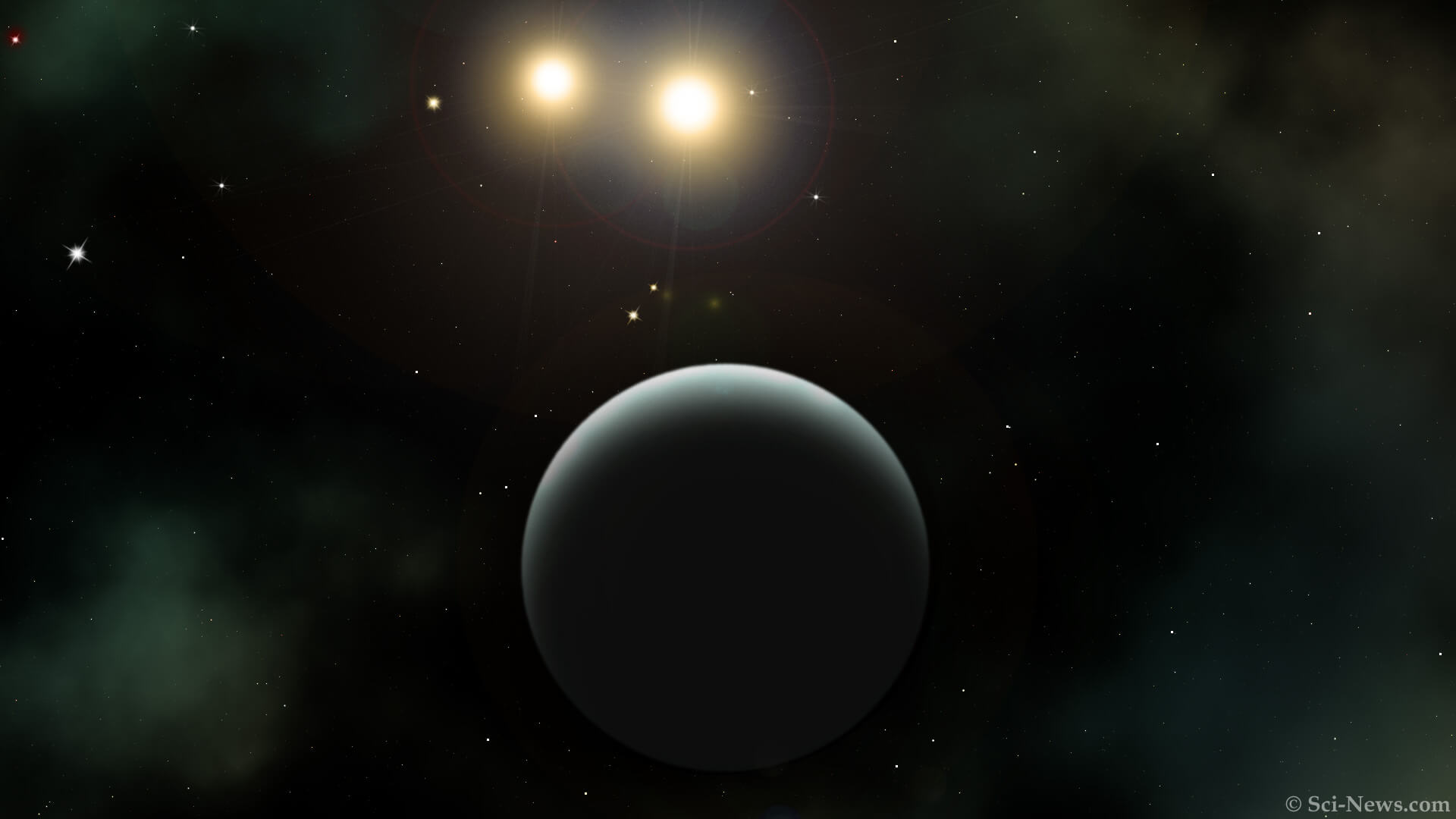
Planet Larger Than Jupiter Found Orbiting Two Stars
The fact that the largest transiting circumbinary planet was found more than 800 light-years away from us is absolutely incredible to think about.
By Jocelyne LeBlanc | Mysterious Universe
An exoplanet slightly larger than Jupiter has been discovered orbiting two stars. The newly discovered circumbinary planet – which is a world that orbits two stars – has been called TIC 172900988b. The planet was found by NASA’s Transiting Exoplanet Survey Satellite (TESS).
It is located about 824 light-years away from us in the constellation of Cancer. The system where the exoplanet and the two stars were detected is 3.1 billion years old.
And the planet is large as it is 1.01 times bigger than Jupiter and 2.9 times its mass. It is also 11.07 times the size of Earth. This means that it is the largest transiting circumbinary planet that has been found thus far and about twice as big as Kepler-1647b which was the previous largest one. It takes TIC 172900988b 189 days to orbit one star and 204 days to orbit the other one. There is no chance of it having any life as it is way too hot.
Based on the data collected by TESS, experts found one primary and two secondary eclipses with depths of 40% and 35%. The astronomers described this further, “TIC 172900988 was observed in a single sector and the planet produced just two transits — one across each star — during the same conjunction.” “The planet transited the primary star and then 5 days later it transited the secondary star.” “The binary star is itself eclipsing, with a period of 19.7 days and an eccentricity of 0.45.”

Dr. Veselin Kostov from NASA’s Goddard Space Flight Centre as well as his colleagues described in the paper the history of finding these transiting circumbinary planets, “Long before NASA’s Kepler space telescope’s discovery of transiting circumbinary planets, astronomers discussed an unusual observational signature such planets would have — the occurrence of multiple transits during one conjunction.”
They went on to write, “This effect is caused by the planet transiting one or both stars of the host eclipsing binary several times over the course of a fraction of its orbital period.” “The configuration of such transits depends on the relative sky-projected velocities of circumbinary planets and the stars being transited. Importantly, the orbital period of these planets can be estimated from such transits provided the host system is a double-lined spectroscopic binary.” (Their study on TIC 172900988b can be read here.)
The fact that the largest transiting circumbinary planet was found more than 800 light-years away from us is absolutely incredible to think about.
About the Author
Jocelyne LeBlanc works full time as a writer and is also an author with two books currently published. She has written articles for several online websites, and had an article published in a Canadian magazine on the most haunted locations in Atlantic Canada. She has a fascination with the paranormal and ghost stories, especially those that included haunted houses. In her spare time, she loves reading, watching movies, making crafts, and watching hockey.
